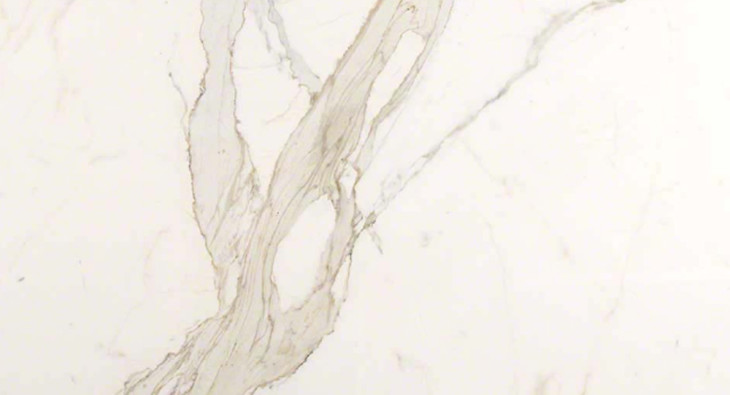
Veining, or the long, meandering lines of color that traverse natural stone, is one of the most desirable characteristics people look for in natural stone because of the elegant yet organic look it gives. In geological terms, veins are sheets of crystallized minerals within a rock. These minerals are usually deposited by water, which then evaporates and leaves the mineral traces behind. And, as opposed to speckles of color you might see in some stones, veins are also defined by being long deposits, though they can vary in width and can have numerous branches.
Types of Veins and How They Form
There are a few different categories of veins, two of the most major being open-space filling and crack-seal growth. To put it very simply (there’s a lot of jargon that gets tossed around when talking about geology!), open-space filling occurs at relatively low pressures and tend to have deposits that radiate out from certain specific spots in the stone and look like they’re filling the available open space — agate is a good example. Crack-seal veins often occur quickly and at higher pressures, which cause large open spaces to open up in the rock. Minerals are then deposited into the space and settle as the water or other liquid evaporates.
There are also a few other ways to categorize veins. For homeowners looking to purchase stone for their home, you’ll likely see examples of asymmetrical veins and banded veins. An asymmetrical vein has layers of different material on either side, and a banded vein has layers of different minerals laying parallel to the walls.
How Veining Affects Stone Appearance and Style
Along with the different types of veins, there are different ways to display veining in a stone slab depending on how it’s cut. A vein-cut stone is considered one that is cut against the vein. This will be a stone whose veins appear in long lines that run lengthwise across the stone. Cross-cut stones are those that are cut with the vein, which will appear as swirls rather than lines and is a great way to show off all the different hues a stone many have, especially a stone like onyx.
Speaking of colors, mineral deposits can run the gamut from blacks to grays, to reds and brilliant greens and purples. Gold deposits are also highly sought-after and give a stone some sparkle in the sun. Although granite more often than not has speckles of colors, some granites can have long, elegant veins, especially if they’re vein-cut. Different stones also have different veining tendencies: for example, Calcutta marble is prized for its thick, dark veins, whereas Carrara marble is much paler and has lighter, finer veining. It all depends on where the stone forms and the kinds of minerals that are in the surrounding area. That’s the beauty of natural stone — no two pieces are ever alike!
Knowing a bit more about veining can help you differentiate between what you like and dislike about stone slabs when you visit a stone supplier. Veining can range from being incredibly subtle to wildly dramatic, and being able to pinpoint exactly what will look right in your space will help you ensure you’ll love your stone for decades to come. Do you have any additional questions about veining? Let us know in the comments!
